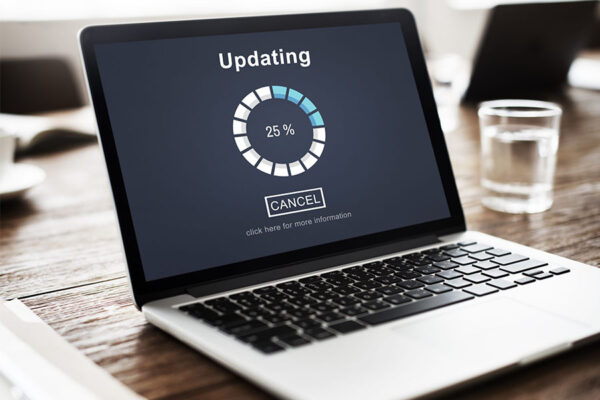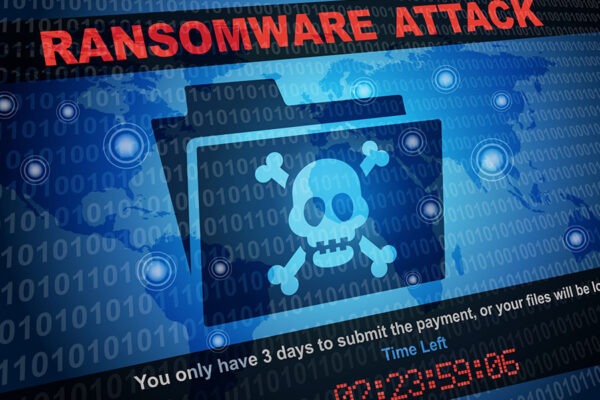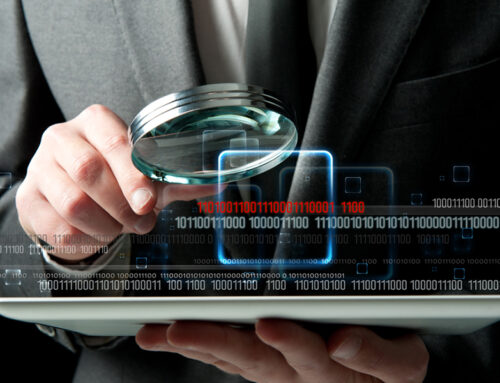Many ransomware attacks are preventable, but they’re on the rise due to businesses underestimating the urgency of implementing robust security solutions. What’s more, there are more ransomware groups than ever, thanks to the huge potential for financial gain. Taking action is a matter of urgency. Every business should take steps to defend itself against ransomware infection and diligently protect its security information. Keep reading to learn how to protect your business from ransomware infections.

What Is a Ransomware Attack?
A ransomware attack occurs when hackers use malicious software or malicious links to obtain sensitive information electronically. Once ransomware takes hold, it locks down your systems, blocks or encrypts files and won’t return access unless you pay a ransom. Attackers can use this type of malware to compromise any company laptop, desktop or mobile device.
Ransomware typically spreads to other devices on the same network, mimicking the damage on every device, including data backup systems and servers. Hackers usually request payment in cryptocurrency to help them maintain anonymity.
Types of Ransomware
Ransomware attacks are growing more complex every year, and with technology moving faster than ever, now’s the time to get up to speed. There are a few different types of ransomware attacks, including:
- Locker ransomware: This type of ransomware attack locks down entire systems, so users can’t do anything with their devices.
- Crypto ransomware: With these ransomware attacks, individual files and critical data are targeted and locked down.
- Scareware: Pop-ups appear with threats suggesting that your encrypted files have been accessed and the only way to gain access to them is to pay. Although it can infect your computer, it’s unlikely your files are actually compromised.
- Encrypting ransomware: This is the most dangerous of all ransomware attacks because it uses advanced software to encrypt your company data.
- Screen lockers: With these ransomware attacks, users are frozen out of their devices. In most cases, a window appears, accompanied by a government seal, stating that an official organization has traced illegal activity back to your device. Remember, the government would always operate through the official legal route.
- Phishing emails: Sometimes, threat actors send a deceptive inbound email in a process called email spoofing. This involves imitating a trusted sender, sending email attachments and hiding links that infect your network with ransomware once a user clicks them.
Today, the majority of ransomware attacks involve a combination of tactics, making them even harder to identify. In some cases, they might deploy double extortion, demanding two ransoms: one to return access to your data and another to stop them from publishing your sensitive data online.
Ransomware has become such a big business that ransomware as a service (RaaS) now exists. RaaS groups provide criminals with the resources to conduct ransomware attacks, then take a percentage and charge a subscription fee.
How to Prevent Ransomware Attacks for Small Businesses
There are some simple rules you can follow to minimize the risk of your business falling victim to ransomware attacks. The three main routes ransomware attackers use are phishing emails, software vulnerabilities and remote desktop exploitation. When you consider the rise in remote work and that many companies have insufficient cybersecurity measures, it’s clear to see why ransomware attacks are becoming increasingly common.
Below are eight tips on how to protect your company from ransomware.
1. Enable Strong Spam Filters
You’ll need strong spam filters to protect your emails and messaging services. Domain message authentication reporting, Sender Policy Framework and DomainKeys Identified Mail are useful technologies to help you authenticate inbound email and prevent phishing emails. Without these measures, it’s too easy for an employee to click the wrong link and accidentally help an attacker gain access to your systems.
2. Ensure Security Software Is Up to Date
Constantly updating your software might seem like an inconvenience and time drain, but it’s critical for IT security. Never skip upgrades to any software or apps you use to ensure maximum protection against threats. However, keep in mind that even the strictest update protocols can’t defend your company against zero-day exploits.
You’ll also need to ensure you apply the latest security patches to all company operating systems, applications and devices.

3. Use Remote Desktop Protocol
Remote work has become significantly more common in recent years, which is great for individuals but not IT security. If you’re using Remote Desk Protocol, multifactor authentication and super-strong passwords are essential.
Another important element of remote working that companies need to carefully manage is their bring-your-own-device policies. There’s a good chance employees’ personal electronics won’t have sufficient security measures to defend them against attackers. It’s safer to restrict access to company data to company-issued devices, portable USB drives or memory sticks.
4. Have a Robust Backup Strategy and Recovery Plan
Every company should have a fully documented and up-to-date disaster recovery strategy. In case ransomware or other types of malware infect your systems, regular backups increase your business’s chance of recovery.
Aim to keep three copies of company data on different media, with one of the copies stored off-site and/or in the cloud. This way, if ransomware attacks your main network, you can easily restore your systems after you deal with the ransomware infection.
5. Implement an Employee Training Program
You can have all the necessary technology and policies in place, but you’re still vulnerable to ransomware without thorough employee training. Lack of knowledge among the workforce makes it easy for attackers to infect your system with ransomware. Although it’s known as an insider threat, employees usually allow hackers in by accident rather than maliciously.
Without training, even competent staff can let ransomware in. Provide thorough training on how to handle sensitive data, and be sure to offer refresher training at least once per year.
6. Manage User Access to Network Devices
Although it’s important to educate employees, you should also carefully configure and manage user controls. Limiting the number of users who can access sensitive data to those who need it most is called the principle of least privilege. This best practice involves giving minimal access to programs, files and accounts and revoking access as soon as an employee no longer requires it.
When too many users have access to too much information, hackers can easily navigate your systems and install ransomware across all systems and devices.
7. Deploy Multifactor Authentication
Two-factor and multifactor authentication, as well as strong passwords, are critical for businesses looking to defend company data from ransomware. A password alone is too easy to hack. By adding the extra layer of multifactor authentication, only someone with a linked company device can approve logins.
8. Use Layered Security Hardware and Software Applications
To give yourself the very best protection against ransomware, layer as many security measures as possible. Most companies need anti-malware programs, antivirus software, firewalls, spam filters — and a team to help them manage the various protocols.
Can a Small or Midsize Business Get Targeted?
All businesses are targets for ransomware. In fact, SMBs may be more susceptible to attacks because they often lack the huge security budgets large corporations have. An attack will lead to downtime and lost revenue for any company, but the impact could be catastrophic for a small company.
Other factors that might make an organization more vulnerable to hackers include:
- The storage of sensitive data such as contact details, addresses, payment information and other personal information that could lead to a serious data breach and unwanted consequences for victims
- Operating in industries such as oil and gas, higher education and logistics, which have low cybersecurity maturity
- Companies that hold data about the government could be more vulnerable to foreign government-sponsored ransomware attackers

Should You Pay a Ransomware Gang?
There’s no clear-cut answer to this question, but it’s crucial that companies that aren’t experts in cybersecurity consult someone who is before taking action. Law enforcement never endorses paying criminals the ransom they demand. Any money given to them funds criminal activity without guaranteeing they can or will give you access to your company data.
However, there have been occasions when companies can’t afford to not pay the ransom. In these cases, not paying might lead to breaching information that absolutely can’t enter the public domain. To avoid being powerless in this situation, it’s vital that you conduct a security audit and take the necessary measures.
Let Experts Take Care of Your Businesses Data
EIRE Systems, the leading IT services provider, is an expert offering IT support, IT security, project management and cloud solutions. Even companies with impressive IT teams can benefit from outsourcing critical tasks such as data center strategies, disaster recovery strategies, renewals and migrations, and business intelligence and analytics.
We’re a leading provider of IT solutions to Japan, Hong Kong, Singapore and China. Get in touch today to see how we can help your business defend itself against ransomware.
About the Author: EIRE Systems
EIRE Systems is a leading independent provider of professional IT, AV and Access Security services to the financial, insurance, manufacturing, health care, retail, construction, hospitality, commercial real estate, legal, educational and multinational sectors in Japan and throughout the Asia Pacific region. EIRE Systems has expertise across a wide spectrum of Information Technologies, with a track record for successfully completing hundreds of assignments since its establishment in 1996.



